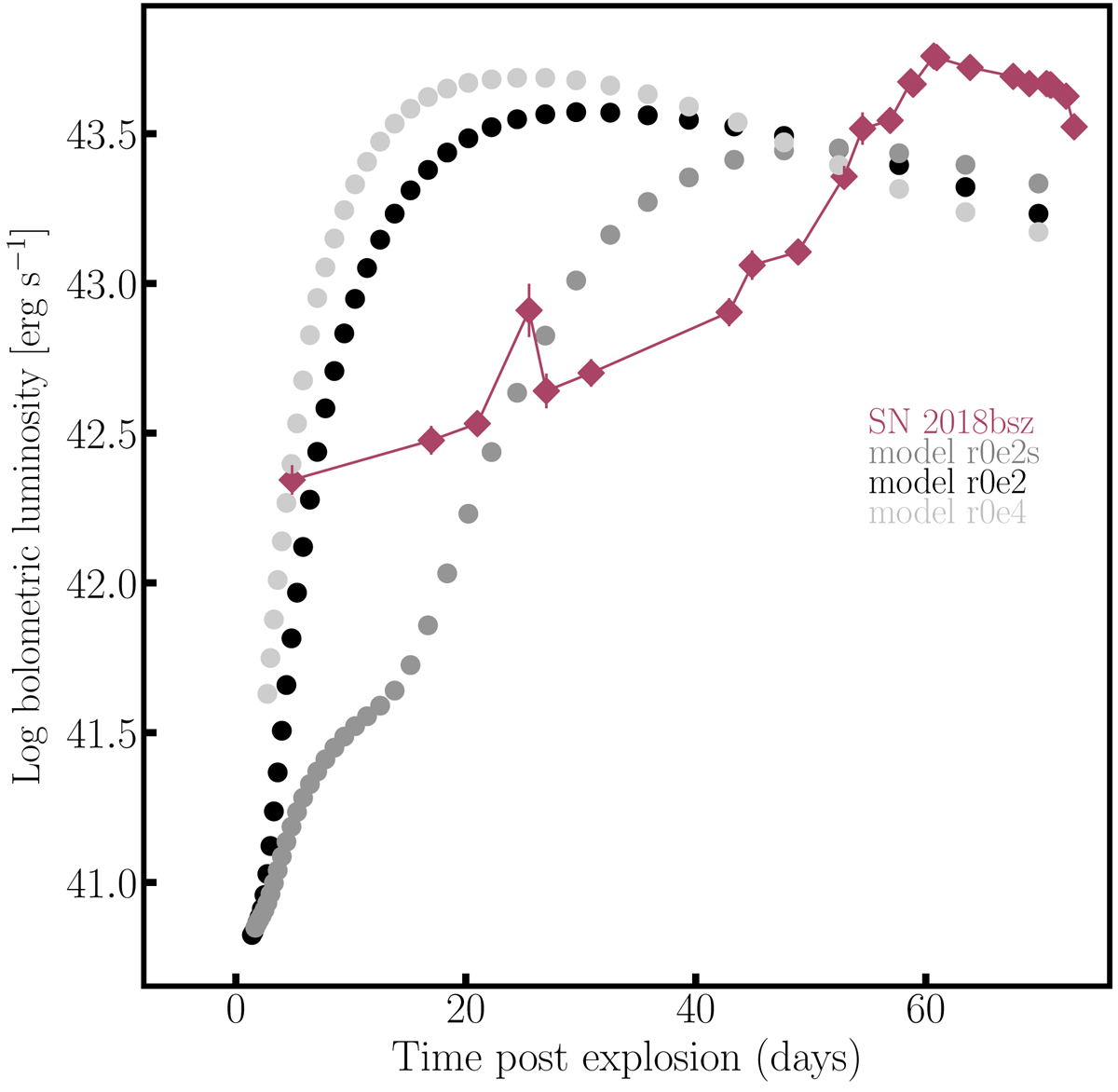Fig. 10.

Comparison of model bolometric light curves with that of SN 2018bsz. Model r0e2 is that discussed at length in the text. Model r0e2s is identical but with the magnetar power injected deep within the ejecta with little advection to large velocities, while r0e4 is identical to r0e2 but with higher kinetic energy. There appears to be a jump in the observed light curve at around 25 days post explosion. This is the epoch where multi-band photometry from SkyMapper is available and we see that SN 2018bsz is significantly brighter in r (than other bands). This may be an issue with host galaxy contamination, and we will investigate this further when we are able to perform accurate galaxy-template subtraction when the SN has faded.
Current usage metrics show cumulative count of Article Views (full-text article views including HTML views, PDF and ePub downloads, according to the available data) and Abstracts Views on Vision4Press platform.
Data correspond to usage on the plateform after 2015. The current usage metrics is available 48-96 hours after online publication and is updated daily on week days.
Initial download of the metrics may take a while.


